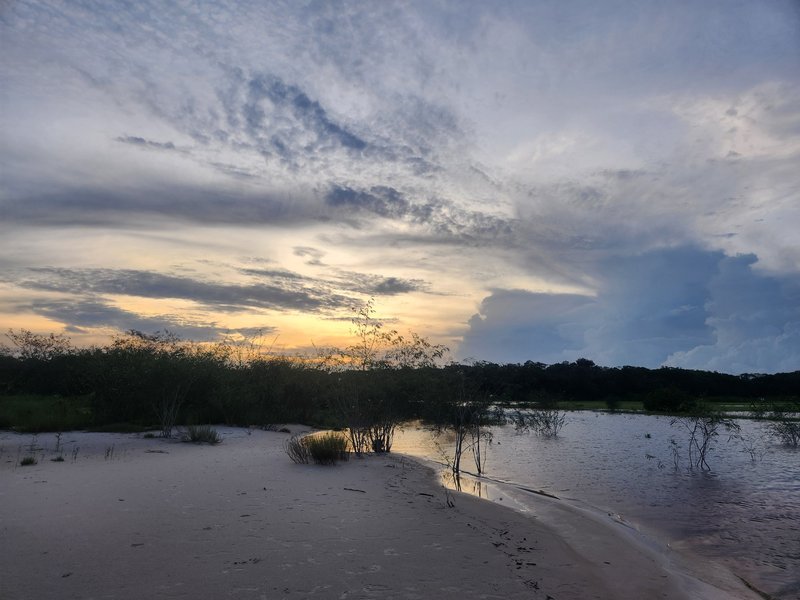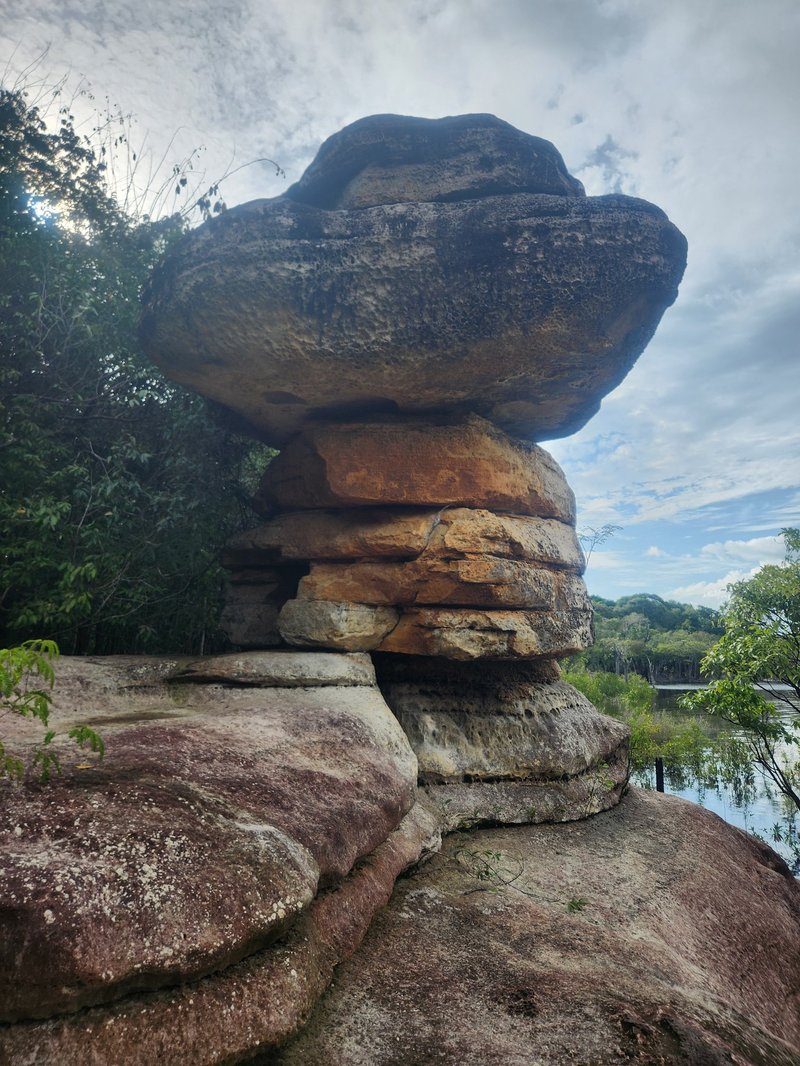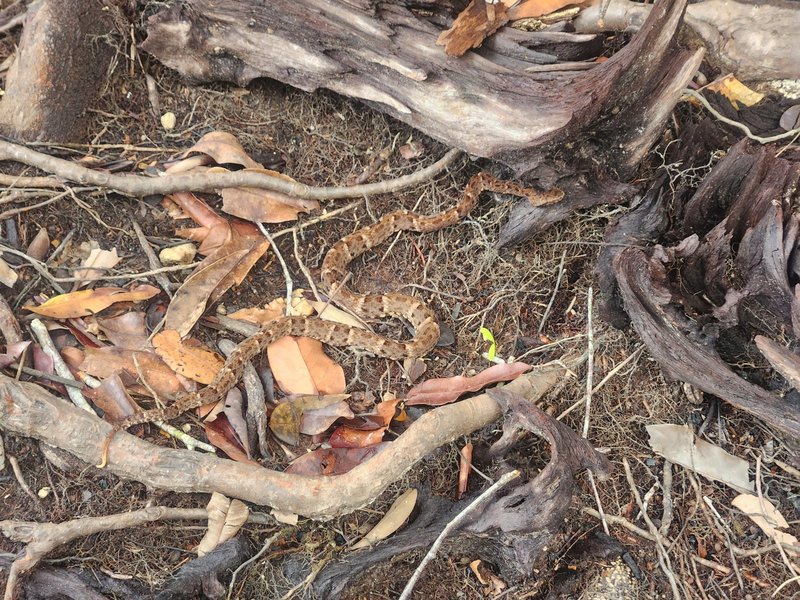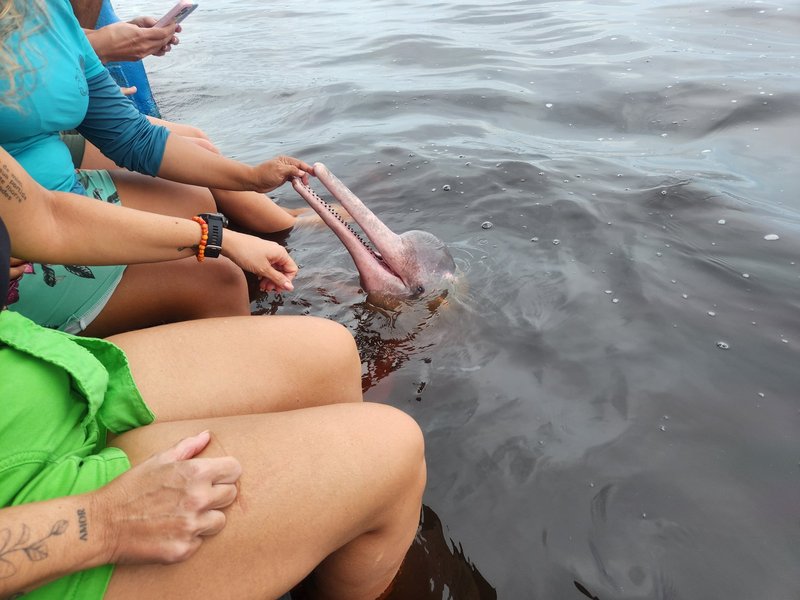I worked hard to find an affordable way to visit this WHS. First, I contacted various tour operators in Manaus to inquire about a boat trip lasting a few days. However, I couldn't find any offer that didn't involve chartering an entire boat at an outrageous price. I then evaluated the possibility of spending a few days in a lodge rather than on a boat. Once again, the price put me off. I have the impression that the Uakari Lodge visited by Els would have been an excellent choice, but the price was high, and the logistics of getting to the lodge complicated matters considerably. Indeed, my Amazon journey didn't begin in Manaus.

It was from the Colombian town of Leticia, and its Brazilian neighbor Tabatinga, that I began my tour of the Amazon. From Tabatinga, it's possible to board cargo boats that also carry passengers on the Rio Solimoes. A few cabins are available, but most passengers bring their own hammock, which they hang on the hooks intended for this purpose. The price of the boat ticket includes three meals a day. My boat was also equipped with unlimited drinking water, toilets, showers and a small restaurant selling sandwiches, instant ramen and sweets. The trip from Tabatinga to Manaus takes four days and three nights (the reverse trip, against the current, is longer and more expensive). Passengers were mainly Brazilians, Colombians and Peruvians, but four other Western backpackers were also on board. We spent the four days of the trip playing cards, watching the employees busy themselves during stopovers in the riverside villages, and watching the landscape slowly unfold in front of our eyes. When the boat skirted the shoreline, it was possible to see sloths, howler monkeys and numerous birds (lesser yellow-headed vulture, black-collared hawk, large-billed tern, yellow-billed tern, ringed kingfisher, Amazon kingfisher, black-fronted nunbird, toco toucan, scarlet macaw, blue-and-yellow macaw, festive amazon, yellow-hooded blackbird, yellow-rumped cacique, russet-backed oropendola). However, more often than not, the boat remained in the middle of the river, which greatly limited the opportunities for observation. On a few occasions, we saw the grey backs of tucuxi dolphins (a different species from the famous pink dolphins, although Brazilians call them both botos).

It was from this boat that I saw part of the WHS for the first time. Indeed, the border of the Mamirauá Reserve overlooks the river. However, that's not enough to tick off this site!
So, since my upstream research had been unsuccessful, I hoped to find a way to visit the Anavilhanas Reserve in Manaus. The Community Perspective section on this page even mentioned day trips to the reserve. Perhaps things have changed, as no one was offering day trips to Anavilhanas. Almost all the excursionists I spoke to discouraged me from visiting this reserve. Indeed, the black waters of the Rio Negro would be much less rich and therefore less conducive to encounters with wildlife than some areas much closer to Manaus. Only one tour operator (Iguana Turismo) actually offered me a trip to Anavilhanas. It was a two-day excursion with an overnight stay in Novo Airão.
For day one, we first visited the ruins of Paricatuba (uninteresting), and then had a mechanical problem with the car. This was followed by a long wait in a pretty outdoor restaurant with ponds and gigantic fish. After the wait, the drive and dinner, it wasn't until late afternoon that we began our tour of the park. It involved a boat tour of the Anavilhanas islands, a short hike through the forest (at Pedra Sanduíche and the Grutas do Madadá caves) and swimming in the Rio Negro at sunset. The river's black water and dense forest are pretty, but the wildlife was absent. Our hike did, however, allow us to observe ants, termites and, above all, a common lancehead (picture), one of the most venomous snakes in the region, according to our guide.

The second day of the tour began in the downpour with a visit to local artisans. After the rain, we went swimming and stand-up paddleboarding in the Rio Negro, before going to see the pink dolphins. The interpreter-guide at the dolphin-watching station emphasized the eco-responsibility of their practices. Indeed, they are the only ones allowed to operate in the national park, they don't allow the dolphins to swim with them, and they only feed them 20% of their daily requirements, making them not dependent on feeding. Three dolphins were present during our visit. The guide fed them and made them jump so close to us that they rubbed against our legs hanging off the end of the dock. I really enjoyed seeing these unusual animals up close.

In the end, I'm glad I made the trip, but I don't think it's the best way to visit this WHS. The flora and fauna of the Amazon require more in-depth visits to be appreciated. Also, I think it would probably have been possible to do this tour independently, heading all the way to Novo Airão and continuing directly to the marina. The Mamirauá reserve would probably be my choice for a future revisit. However, I can highly recommend the cargo boat to hammock down the Amazon for four days. Now that was an incredible experience!
Comments
No comments yet.
